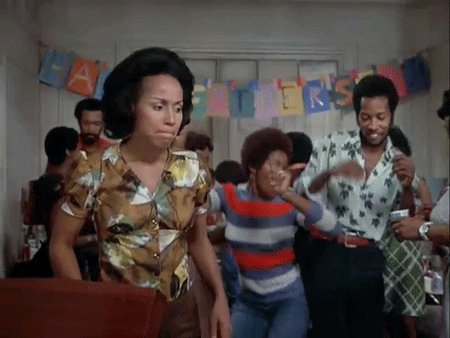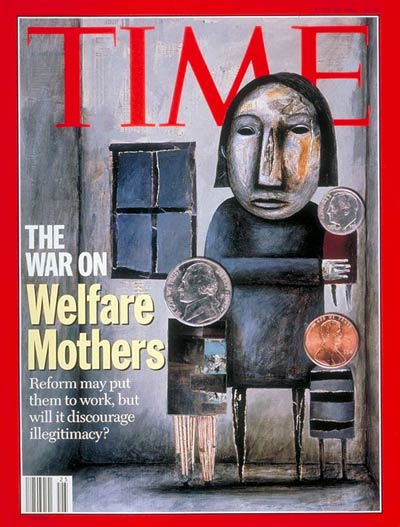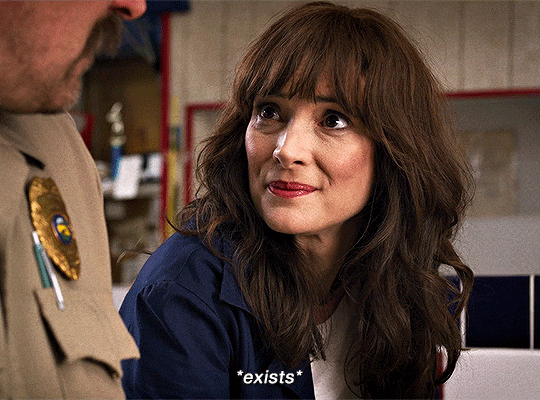#I made over Ted and Meredith and gave them two teen daughters and I made over the eclectic arts household as well
Text
I am out of the first trimester which means that if I bend my hip too far I WILL die
#non sims#exaggeration but my round ligament pain is no freaking joke#un-shocking really considering my mother’s tendon problems and my grandmother’s arthritis like#my joints are doomed for sure#in other news I am playing a cute lil group of sims in strangerville#sort of rotationally with a couple living in chestnut ridge#the couple has a baby on the way and they’re engaged#the SV group is four unrelated young adults and a pair of teenage sisters#I made over Ted and Meredith and gave them two teen daughters and I made over the eclectic arts household as well#well I made over their faces. their outfits are the same haha#ugh and Hailey and Marissa are so cute I’m excited to fight the plant mother with all these guys
1 note
·
View note
Text
The Mommy Myth: The War Against Welfare Mothers (Part One)

This gif is from the 1970s film Claudine, a romantic comedy starring James Earl Jones and Diahann Carroll about a garbage man and a welfare mother trying to make the relationship and where he helps provide for her home and kids without the social worker checking in.
We check in with The New Yorker, who took a break from their cartoons to cover a welfare mother named Carmen Santana (not her real name): she is Puerto Rican American (and judging by the text’s descriptions of her “wide nose”, complexion, curly dark hair, and thick lips, she must be Afro-Latina) who weighs over 200 lbs and boy the writer was having a field day describing her heft and body. She has no interest in “national or international events” (common flaw that goes across class lines), she spends her day watching soap operas, cursing in Spanish and giving her many kids “a good cuffing” and they just throw the trash out the window. Her kitchen is filthy and her philosophy is “what will be, will be” (a common thing) and sits all the time even when she is cooking while her kids’ bedroom is decorated with obscene graffiti; she had her first child at age 15 and went on to have eight more kids by three different men and her mother had three children by different men and now Carmen’s daughter is also on welfare. She spends the money from Aid to Families with Dependent Children (AFDC) on makeup and perfume and hair (honestly wasn’t that a thing at some point? Like Midge Maisel and her mother make sure their husbands never see them without perfect hair and makeup) and junk food for the kids and she also plays the numbers where she spends her winnings on “jewelry , beer, and liquour” and “trips to Puerto Rico”. I guess we are not supposed to sympathize with this woman.
Carmen was an example of a stereotype that was used to represent and demonize welfare mothers. Johnnine Tillmon, the first chairwoman of the group National Welfare Rights Organization saw welfare and the stereotypes as a feminist issue.
I’m a woman. I’m a black woman. I’m a poor woman. I’m a fat woman. I’m a middle-aged woman. And I’m on welfare. In this country, if you’re any one of those things---poor, black, fat, female, middle-aged, on welfare---you count less as a human being.
She even said that the biggest reason that people believe the stereotype of the welfare mother is that they are “special versions of the lies that society tells about all women”, sadly she wasn’t listened to in the mainstream media where welfare mothers were deviants in a culture that valued the rugged individual, relentless hard work and sacrifice, slim bodies aided by Bowflex or Thighmaster, and shiny blond hair with perky smiles. Yo because of this stereotype, women of color with several children are considered suspect. It was also another way to pit moms against moms, the resentment of packing the kids’ lunch and work at a dull 9 to 5 job or scrub the kitchen floors while this stereotype gets to have sex with whoever and drink booze with tax dollars. Even Time magazine went in:

Here’s a few facts: the average welfare family in 1994 had three members, the mother and two children. 39% were White and 37% were Black, African Americans numbered 12% of the national population but were about 35-37% of the welfare population and African Americans were three times as likely as White Americans to live below the poverty level. Only 10% of AFDC mothers had four or more children and 80% had one or two kids and figures in 1993 shown 75% of adults left welfare within two years and 1/2 of single mothers worked while on welfare and 1/3 were working to supplement the minuscule allotment and get off from unemployment. But that was lost on the media that focused on families with two or more generations on welfare (a tiny fraction of welfare recipients) even focusing on unwed teen welfare moms because they were...SHOCKING! Only 1% were teen mothers. Welfare mothers were known only by first name and she lived in the urban decay of New York, Camden (New Jersey), Chicago, or Detroit; they were black and unmarried and had a bunch of kids who don’t share a common biological father and she smoked and painted her nails and gave soda to her baby (OMG imagine 2010s soda freaks) and her face was pixelated in the media. Some of them were depicted as cynical about life and motherhood, it wasn’t sexy for them and at least they felt ambivalence (which was soooooo disco era).
youtube
Then came the 1990s where the moderate Democratic Clinton administration introduced “Welfare Reform” where President Bill Clinton ended “welfare as we know it” and he was just following his predecessors: Richard Nixon, Ronald Reagan, and George Bush (the first) regarding their attitude towards welfare recipients. The Welfare to Work program who were being trained by job placement programs that prepared them for low-paying jobs in retail and in service and the resources for job training were limited (also if your hours took you away from your kids?). Also it was hard for welfare to work moms working to move up in their jobs and often mostly got gigs like seasonal retail.
The depiction of welfare mothers was different from the celebrity mom: she wasn’t ascribed emotions where her eyes welled up with tears or laughed, she wasn’t well lit with a light or a rosy focus, never seen holding her child up or clutching the child and magazines like Redbook or McCall’s never did a cover story with a welfare mom and her kids done up and showing the readers fun things they do with little or no money or touring New York City on $10 for a day or games to play while waiting in long lines (honestly that is a good idea, someone pay Susan and Meredith if the magazines do that). Also if you were a woman of color, especially a young one or a poor one (or both) you weren’t supposed to have the “baby lust” so gushed about in celebrity mom profiles; trust me I grew up a Latina kid in Central California and many older women like my mom would worry about the girls that want to have babies so bad or fall in love hard and fast, a young Karen Wheeler in 1967 can give all to family and babies and staying home but it is more precarious for a young girl of color.

The media depiction of poor people wasn’t always so negative: political scientist Martin Gilens found that when the “War on Poverty” began, where the Lyndon B. Johnson administration focused on eliminating poverty and started programs like Head Start rather than piss on poor people, coverage focused on poor white people in rural areas like Appalachia or in the Rustbelt where mines or factories closed down, these were the faces of The Grapes of Wrath, the Joad family who fought against hardship on their way to a better life. After Michael Harrington published his book The Other America, public support for ending poverty was strong. But then came the riots in Watts, Newark, and Detroit (just a few) where mostly people of color fought back against law enforcement and the media used images of African-Americans to illustrate their pieces on welfare, which reinforced stereotypes about welfare and as the coverage became more negative, the skin color got darker (even though statistics then and now showed many more white recipients of welfare)
How about how the face of welfare became so feminized? In the 1930s, when the Welfare program and Social Security began under the New Deal by President FDR, a lot of women of color were barred from welfare because of discriminatory practices, this changed with the Civil Rights Movement which opened up some doors for women of color to get assistance for their children and households. Before the Welfare recipient was faceless or usually a man, who got rich off welfare and bought Cadillacs with the money, something that Richard Nixon really clung to and he asked Johnny Cash to perform the song “Welfare Cadillac” at a White House event sparking controversy. Indeed when Cash met with Nixon, he gave him a private concert with songs that were more compassionate and less reactionary than what Nixon wanted. In the early 1960s, magazines like Look or Reader’s Digest wrote to readers about women who sent their many children to beg for money while the mother ate steak with their boyfriend, or worse, spent the money on narcotics and kept giving birth to more than 10 kids. The image of poor, fertile mothers on taxpayer money was more infuriating than that of a able-bodied man getting the money, but making welfare moms work was shocking (as the system was designed for widows to stay home with their children and not worry about money), even a stinging David Brinkley chafed at leaving kids at a daycare center...it would cost the taxpayer more.

Ronald Reagan coined the term “welfare queen” (look it up) and made exaggerated anecdotes and given how people were drawn to him (looking at you Mike and Nancy’s parents), he was believed despite him not citing sources or studies. Reagan voters fell for the image of a welfare mother who spent money for fancy cars, vacations, designer clothes, and played the system (there were a few like Dorothy Woods, but again if this were common, the landscape of the inner city would look a lot different...) It was a dark time, the Religious Right took control, Proposition 13 in California put a limit on property taxes and started many tax revolts to limit government spending, and let’s not forget Ronald Reagan opposed the following:
Civil Rights Act of 1964
Voting Rights Act of 1965
Fair-Housing Legislation in California
Legislation to declare Martin Luther King Jr.’s birthday as a national holiday
How does that Reagan/Bush ‘84 sign look Ted and Karen?

Stay tuned.....
#The Mommy Myth#susan j douglas#meredith michaels#women in media#motherhood#motherhood in media#1970s#1980s#1990s#2000s#Welfare Mothers#women of color#racism#sexism#fat shaming#classism#The New Yorker#Johnnie Tilllmon#Time magazine#Aid to Families with Dependent Children#Unemployment#sensationalism#Sensationalization#Teen Moms#Clinton Administration#Bill Clinton#reagan administration#bush administration#Nixon Administration#Ronald Reagan
1 note
·
View note